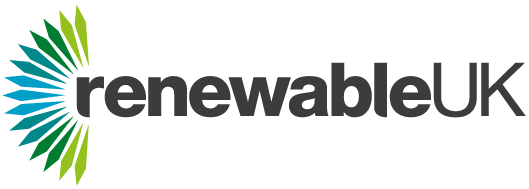Melanie Onn of Renewable UK shares her experience.
Shadow boards are becoming increasingly common in companies of all types. Sitting in parallel to the full board, they are advisory only but can offer important insight in board decision-making. Typically, shadow boards are made up of younger people – fashion brands such as Gucci or Prada have found a shadow board effective at getting Gen-Z’s consumer perspective into the boardroom. But shadow boards are not only useful to direct-to-consumer businesses.

Renewable UK is the industry body for renewable energy companies. Melanie Onn explains, “It is a really young and diverse industry. But we found that vibrancy wasn’t reflected in the – typically very senior – industry leaders Renewable UK regularly interacts with.”
A shadow board seemed an ideal way to get a more representative industry voice at strategic level. It recognises that earlier career professionals may not yet be at the right level, or indeed have the time available, to take on full non-executive director responsibilities, yet have valuable insight and perhaps more detailed operational knowledge.
Melanie also explained that for Renewable UK the shadow board brings longer-term industry benefits. “As with many sectors, we are striving to bring more diversity into our senior leadership. Involving people from under-represented groups in our shadow board has challenged and benefited our business strategy, alongside supporting them to become leading voices to act as mentors and role models in the future.”
Who are shadow board members?

Shadow boards are usually drawn from a company’s customer base and/or their workforce, at any level below C-Suite. Having a clear idea of the purpose of any particular shadow board is key to determine criteria for recruitment.
Renewable UK chose to recruit shadow board members as time-limited cohorts, handing over to a new cohort periodically. This helps broaden the opportunity across the industry and provide focus, although other companies prefer to run a more traditional staggered recruitment cycle. Equally, some organisations may prefer to invite selected individuals to join a shadow board, but a transparent recruitment process brings many benefits.
“Opening applications for our shadow board was really well received across our industry,” says Melanie. “We received 200 applications in our first year, and almost double that in the second.”
This level of engagement, visibility and also legitimacy would have been hard to achieve with more discreet recruitment processes. It also means a robust selection process is required. With such a large applicant pool, an initial sift on neutral criteria was needed. Renewable UK then closely reviewed around 50 applications to narrow down a group to invite for interview, and ultimately appoint a cohort of 12 shadow board members.
Melanie explains, “We had very clear criteria for who we wanted on our shadow board. We were absolutely committed to diversity in the demographic sense, such as gender, ethnicity and LGBT representation. However, our diversity went beyond that as we were keen to ensure our shadow board members had experience in different geographical areas of the UK, and that they had a wide range of professional skills.”
As such, the final shadow board cohort bring operational, communications, technical experience and more across different sub-sectors, like off-shore wind and solar energy.
Setting-up a shadow board
An organisation’s first shadow board, in particular, takes careful thought and preparation. It is best to involve the first group of shadow board members in as much of this process as possible.
“Our first cohort did the ‘heavy lifting’ themselves, in writing Terms of Reference, selecting a Chair & Vice Chair,” Melanie shares. “This made sure the shadow board is truly shaped by and reflects a different perspective.”
The other element which has been key to Renewable UK’s shadow board’s success has been bringing in training for the shadow board members. “A lot of our shadow board members are in more operational, rather than strategic roles. This can make the non-executive rule of ‘noses in, fingers out’ harder for them to follow and truly grasp,” Melanie says. “We were delighted to work with WB Directors to offer our cohort training on what is (and isn’t) involved in acting as a non-executive. They also really opened the participants’ eyes to the wider opportunities out there on community boards, which they may chose to pursue after their term on our shadow board ends.”
What do shadow boards actually do?
Renewable UK chose a fully transparent model for their shadow board. As an industry body this was felt to be the most suitable approach. As such the shadow board get the full board pack and discuss it with senior Renewable UK executives ahead of official board meetings. “Interestingly, the shadow board have picked up on very similar issues or points of ambiguity as the full board has,” Melanie observes. “It actually turned out to be a good preparation for the executive in anticipating the board’s questions.”
Renewable UK made space for four shadow board members to attend every board meeting – the shadow board Chair and Deputy, plus two members on rotation. This gives all shadow board members an opportunity to experience a real boardroom environment, at a much earlier career stage. It also means any queries can be answered or further perspective sought.
This model is highly transparent, and more commercially sensitive organisations will follow a more restricted ‘shadowing’ model. This may include redacting elements of the board pack shared with the shadow board or selecting specific strategic issues to seek input from the shadow board on, rather than such a holistic approach.
Mutual benefit is the ultimate test of a successful shadow board.
“Renewable UK is really committed to ensuring our shadow board brings benefit to us as the industry body, our individual member organisations, and also to the individuals in each shadow board cohort themselves,” Melanie says.
As well as offering training and support to go on to develop a non-executive career alongside their day jobs, the shadow board cohorts are offered networking opportunities and connections. The insight into the boardroom and levelling up of their strategic leadership skills in a very practical way also brings huge advantages when it comes to their future career.

To find out more about WB Directors work with shadow boards, please contact
Ancia Cronje at ancia.cronje[at]wbdirectors.co.uk
